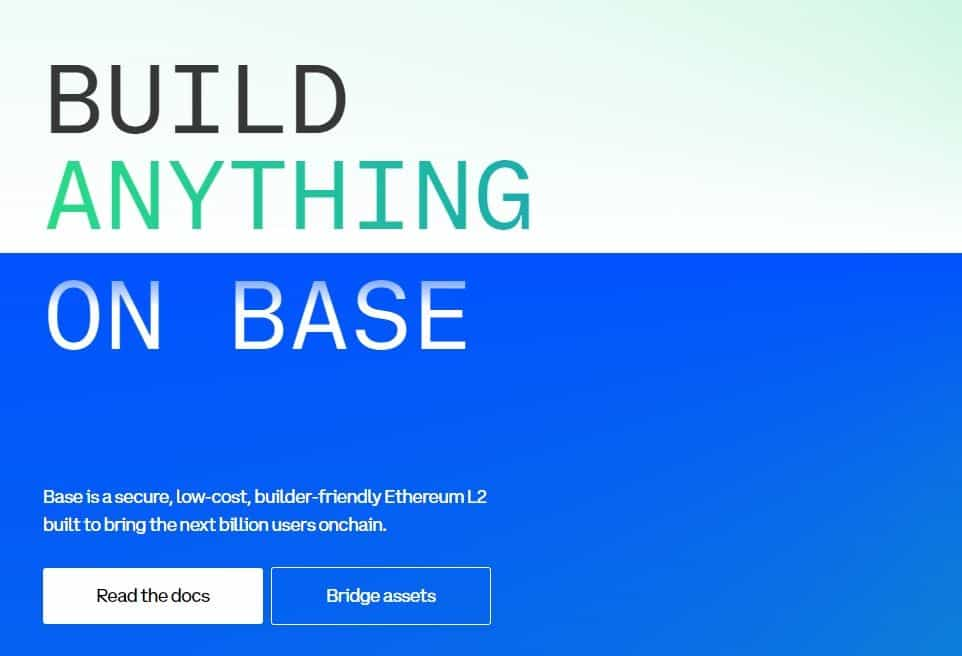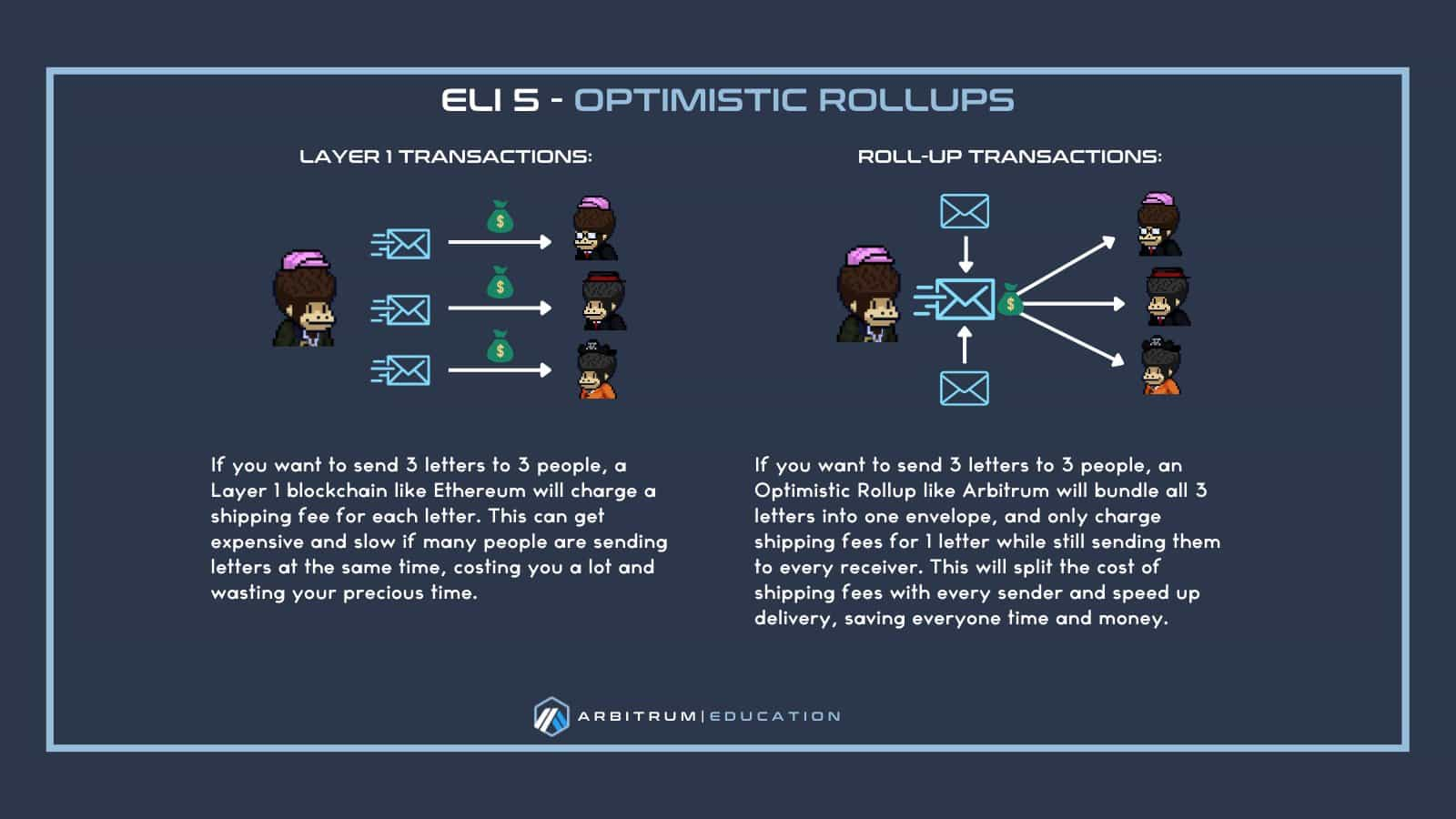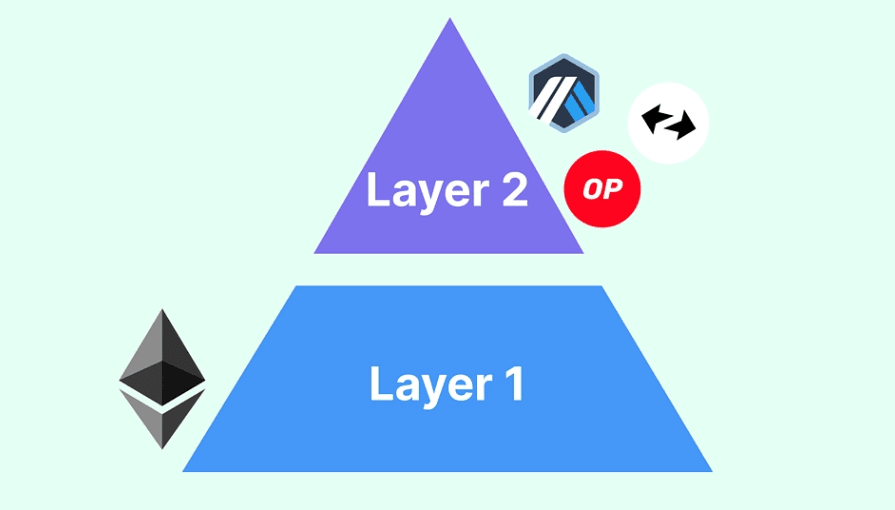Coinbase has emerged as a household name in the crypto sphere, akin to the likes of Amazon or Google in the tech realm. The US-based platform is not just a cryptocurrency exchange, it's a gateway to the entire crypto universe.
Imagine Coinbase as the front door to a digital financial wonderland where you can trade, invest and store your digital assets. Founded in 2012 by Brian Armstrong and Fred Ehrsam, Coinbase has quickly become one of the most user-friendly on-ramps for both newcomers and crypto degens.
At its core, Coinbase is a cryptocurrency exchange where you can buy, sell and trade various cryptocurrencies. It offers an easy-to-navigate interface that simplifies the process of buying cryptocurrencies.
Beyond its primary exchange, Coinbase has been instrumental in expanding the crypto ecosystem. In 2021, it made history by becoming the first major cryptocurrency exchange to go public on the Nasdaq stock exchange. This move brought further legitimacy and mainstream recognition to the world of cryptocurrencies.
In the fast-paced crypto market, Coinbase wields significant influence. While it has played a pivotal role in popularizing cryptocurrencies, it faces challenges like any other player in the industry, including regulatory scrutiny, technological advancements and competition from other exchanges.
In keeping with its dedication to the growth of the crypto ecosystem, Coinbase launched its own network on Ethereum as a Layer 2 known as “BASE.”
In this Coinbase Base review, we'll touch base on (see what I did there?) everything you need to know about the network.
What is Layer 2?
Ethereum has long grappled with scalability issues, resulting in slow transaction processing times and exorbitant fees during peak usage. In response to this, various Layer 2 scaling solutions have emerged, offering a glimmer of hope for Ethereum's scalability woes.

This is where BASE comes in. Coinbase, one of the most prominent cryptocurrency exchanges, has introduced BASE, a Layer 2 scaling solution that employs Optimism's Optimistic Rollups to address these challenges. BASE is a Layer 2 blockchain network built to help scale Ethereum using OP Stack in collaboration with Optimism.
That sounds great, but what is Layer 2 (L2)?
Layer 2 solutions, in the context of Ethereum, are secondary blockchain networks or protocols built on top of the Ethereum mainnet (Layer 1) with the primary purpose of improving its scalability, reducing transaction fees and increasing overall efficiency. They are designed to alleviate the limitations of the Ethereum network, which include slow transaction processing times and high gas fees. Layer 2 solutions achieve these goals by moving some of the computational and transaction load off the Ethereum mainnet, while still maintaining a connection to it for security and trust.
Layer 2 solutions offload a significant portion of transaction processing from the Ethereum mainnet. This reduces congestion on Layer 1 and allows for faster and cheaper transactions. They use various techniques to bundle multiple transactions together and submit them to the mainnet as a single transaction or checkpoint.

If you want a deeper look into the world of Ethereum Layer 2 scaling solutions, we have a great analytical piece that compares Arbitrum vs. Optimism, ZkSync and Base side by side.
What is BASE by Coinbase?
BASE is an open-source Ethereum L2 chain developed in collaboration with Optimism and incubated within Coinbase. It provides a secure, cost-effective and developer-friendly platform for building decentralized applications (DApps) which secure back to Ethereum's Layer 1 (L1) blockchain. BASE was built on the open-source OP Stack with the following features:
- Secured by Ethereum: BASE is built on the security and scalability of Ethereum, leveraging Coinbase's expertise to facilitate onboarding from Coinbase, Ethereum L1 (the mainnet), and other interoperable chains. It benefits from Ethereum's security while offering additional features.
- Empowered by Coinbase: BASE offers easy integration with Coinbase's products, access to its user base and various developer tools. This enables developers to tap into the 110 million verified users and $80 billion+ assets in the Coinbase ecosystem.
- Low Fee Transactions: BASE is designed to offer full Ethereum Virtual Machine (EVM) compatibility at a lower cost. BASE supports cheaper transactions for DApps and provides developer APIs for account abstraction.
- Open Source: BASE aims to be decentralized, permissionless and open to anyone interested in creating a standard, modular, rollup-agnostic Superchain powered by Optimism. It joins Optimism as a Core Dev on the open-source OP Stack and seeks to foster a thriving developer community.
How Does Base Work?
As BASE is built using OP stack, it inherits all the benefits and technology of Optimistic roll-ups. Roll-ups are at the heart of the Layer 2 movement happening on Ethereum which radically reduces gas fees and transaction costs.
BASE employs Layer 2 technology to optimize cost-efficiency while retaining the full functionality of Ethereum. It does this by running a parallel blockchain network that operates on top of the primary Ethereum chain — hence the term “layer.” This Layer 2 network handles transaction processing for all participants within the BASE network. Subsequently, once these transactions are validated, they are transmitted to Ethereum Layer 1. The primary Ethereum blockchain then incorporates this data into its ledger, adding it to the main chain.

BASE uses that "rollup" mechanism, which essentially aggregates data from numerous distinct transactions into a single transaction bundle. By consolidating similar transactions, BASE further reduces the expenses associated with appending transactions to the Ethereum blockchain. In essence, BASE serves as a cost-efficient solution for Ethereum developers, where users and developers can make transactions much cheaper.
Features of Coinbase BASE Protocol
Coinbase BASE packs a punch. Let's explore!
Security
BASE inherits Ethereum's security by leveraging the power of Ethereum's Layer 1. When transactions are executed on BASE's Layer 2 scaling solution, they undergo a two-step process. First, they are swiftly processed off-chain, optimizing transaction speed and cost efficiency. However, the crucial security aspect comes into play during the second step when transaction data is periodically submitted to Ethereum's Layer 1 for verification.
This means that BASE relies on Ethereum's robust consensus mechanisms and battle-tested security protocols to ensure the integrity of transactions. Attempting to compromise or reverse a transaction on BASE would necessitate undermining the entire Ethereum network, an exceptionally challenging feat that effectively bolsters BASE's security and reinforces its trustworthiness for users and developers alike.
Transaction Speeds and Capacities
As BASE is built using OP stack, it inherits all the traits of Optimism’s optimistic rollups. In its current form, the max TPs achievable is 2,000 TPS according to Ethereum.org. However, the introduction of data sharding on Ethereum is expected to improve scalability in optimistic rollups. Because roll-up transactions must share blockspace with other non-rollup transactions, their processing capacity is limited by data throughput on the main Ethereum chain. Danksharding will increase the space available to L2 chains to publish data per block, using cheaper, impermanent "blob" storage instead of expensive, permanent CALLDATA.
Proto-danksharding, or EIP-4484, is an intermediate step in the Danksharding journey which will further reduce gas costs and thus transaction fees on BASE and is expected to go live in Q4 2023.
Integration with other platforms
Because BASE is EVM-compatible, it’s very easy for developers to launch their platforms on BASE. Some of the biggest OG DeFi DApps such as AAVE, SushiSwap, Curve Finance, Uniswap and Compound have already launched on BASE and boast high Total Value Locked (TVL). This demonstrates users' high confidence in a newly launched borderline experimental Layer 2.
User Experience
In Coinbase’s own words:
“BASE is an easy way for decentralized apps to leverage Coinbase’s products and distribution. Seamless Coinbase integrations, easy fiat onramps, and access to the $130B assets on platform in the Coinbase ecosystem.” (Source: Coinbase)
In real terms of how this will benefit actual users in the future, I do imagine a scenario where users will be able to buy their assets from the Coinbase centralized exchange (CEX) and immediately withdraw to the BASE L2. From there, users will be able to use most of their favourite Ethereum DApps as well as some new and unique DApps at substantially lower cost than if they were using Ethereum Layer 1.
Essentially, new users will be using L2s, paying for fees in ETH at low rates and depositing their crypto to Coinbase to sell for fiat currencies without even realizing they are using Ethereum infrastructure and benefitting from Ethereum’s security. In much the same way that not many of us really understand how the internet works but we use it daily, I imagine a similar scenario with L2s and I believe Coinbase will facilitate this transition with ease as it’s already a huge and popular CEX.
Advantages
Coinbase's L2 solution, BASE, offers several to benefits the cryptocurrency ecosystem:
- Cost-Efficient Transactions: BASE significantly reduces transaction costs compared to Ethereum's Layer 1. In fact, BASE claims it is 10 times cheaper than the Ethereum mainnet. This makes it more affordable for users to interact with blockchain applications, thereby increasing the overall accessibility of decentralized finance (DeFi) and other blockchain services.
- Faster Transactions: Users on BASE can enjoy quicker transaction processing times. This improvement in speed enhances the user experience, especially for activities like trading, yield farming, and NFT transactions.
- Seamless Onboarding: Coinbase can directly onboard its 110 million verified users onto BASE without requiring them to bridge their assets from Ethereum L1. This eliminates a technical barrier for newcomers, making it easier for them to start using DeFi and DApps.
- User-Friendly Experience: Users won't necessarily need to understand the intricacies of Layer 2 technology. They can simply use Coinbase's platform and experience faster, cheaper transactions without the need for complex technical knowledge.
- Scalability for DeFi: The reduced fees and faster confirmation times on BASE can incentivize more users to participate in DeFi projects. This could lead to increased liquidity, improved yield opportunities, and a more robust DeFi ecosystem overall.
- Mainstream Adoption: By providing a more efficient and cost-effective user experience, BASE can help bridge the gap between cryptocurrency enthusiasts and mainstream users. This may encourage more people to explore and adopt blockchain technology.
BASE aims to make cryptocurrency and blockchain technology more accessible, user-friendly, and cost-effective, ultimately benefiting both newcomers and seasoned crypto enthusiasts while contributing to the growth of the cryptocurrency ecosystem.
BASE vs. Other Ethereum L2s
Let’s compare BASE with some other popular blockchains as well as some ETH L2s using TVL and daily volume.

Comparatively, BASE stacks up really well against other long-established blockchains such as Solana or Cardano.
| L2 | TVL | Daily volume |
|---|---|---|
| BASE | $347.2 million | $17.6 million |
| Arbitrum | $1.71 billion | $181.9 million |
| Optimism | $651.8 million | $14.2 million |
| Cardano | $146.4 million | $1 million |
| Solana | $313.2 million | $190 million |
To summarize, when comparing BASE with other blockchains:
- Total Value Locked (TVL): BASE is placed 3/5 for TVL among the listed blockchains, with $347.2 million. Arbitrum has the highest TVL at $1.71 billion.
- Daily Volume: BASE has a daily volume of $17.6 million, according to DefiLlama, which is significantly lower than Arbitrum's $181.9 million, but higher than the rest.
These metrics suggest that BASE, despite being a new blockchain and L2, still maintains a reasonable trading volume and has a very high TVL compared to some of the other blockchains listed. However, it's important to note that the significance of these metrics can vary depending on the specific goals and use cases of each blockchain platform.
Coinbase Base Review: Closing Thoughts
BASE is a game-changer in tackling Ethereum's scalability challenges. It uses Optimistic Rollups to make transactions faster and more cost-effective while maintaining robust security. BASE works by handling transactions off-chain, and then double-checking them periodically on Ethereum's Layer 1 for added security. The key here is that it gets the best of both worlds — speedy transactions and Ethereum's rock-solid security.
BASE represents a significant stride in advancing the capabilities and accessibility of blockchain technology. After all, who wants to pay $20 for a transaction? BASE is designed to provide users with cheaper and faster transactions, eliminating many of the barriers that newcomers often face when entering the crypto space. With Coinbase's seamless onboarding, users can directly access BASE without the complexities of bridging from Ethereum Layer 1, offering a more user-friendly experience.
The potential of BASE extends beyond cost efficiency; it stands as a catalyst for mainstream adoption by making DeFi and DApps more accessible. As the crypto world continues to evolve rapidly, staying informed about innovations like BASE is crucial. The ever-changing crypto landscape holds immense promise and embracing these developments empowers individuals to engage with Ethereum’s Layer 2 ecosystem, enabling broader participation in the crypto revolution and offering the ability to explore new trends such as SocialFi with friend.tech, which runs on BASE.
Understanding the potential of BASE is vital in the rapidly evolving crypto landscape. It's not just about investing; it's about being part of a financial revolution. Staying informed about innovations like BASE is like keeping your finger on the pulse of the future. Personally, I also think there’s a good chance BASE may release its own token in the future, so using the BASE ecosystem might make you eligible for an airdrop!
So, let's keep our eyes on the horizon and remain informed, for the crypto journey is just beginning and the possibilities are boundless.
Frequently Asked Questions
The main purpose of BASE is to offer a secure, cost-effective and developer-friendly platform for building decentralized applications (DApps) and facilitating transactions. BASE does this in the following ways:
- Scalability: It helps alleviate the scalability issues of Ethereum's Layer 1 (L1) by processing transactions off the L1 mainnet, thus increasing the network's capacity to handle more transactions and users.
- Cost Efficiency: Coinbase Base Protocol reduces transaction fees significantly compared to Ethereum L1, making it more affordable for users to interact with blockchain applications.
- Improved Transaction Speed: With faster block times and confirmations transactions on BASE are processed faster than on Ethereum L1, enhancing the user experience and enabling quicker execution of various blockchain activities.
- User Accessibility: Coinbase's integration allows for the seamless onboarding of its user base onto BASE, simplifying the user experience and eliminating the need for complex processes like asset bridging.
- Developer-Friendly: BASE offers tools and APIs that make it easier for developers to create and deploy DApps, encouraging innovation and growth within the blockchain ecosystem.
In essence, the Coinbase Base Protocol aims to address some of the key challenges of Ethereum L1, such as high fees and slow transaction processing times, to provide a more efficient and accessible platform for both users and developers in the cryptocurrency and blockchain space.
The focus of BASE is to align with Ethereum's open-source ethos. and enable a seamless integration with Coinbase's platform which can streamline user onboarding, eliminating the need for users to bridge assets from Ethereum Layer 1 (L1).
BASE prioritizes cost efficiency by significantly reducing transaction fees compared to Ethereum L1, enhancing its appeal to users and developers alike.
Furthermore, it offers faster transaction processing, a crucial factor for a smooth user experience in blockchain applications, particularly in trading and DeFi activities. Base's developer-friendly tools and commitment to open-source development foster innovation and collaboration within the ecosystem. In summary, Base Protocol's unique blend of Ethereum L2 scalability, Coinbase integration, cost-effectiveness, transaction speed, developer support, and open-source ethos positions it as a noteworthy and user-centric solution built on top of Ethereum.
The answer is largely yes because BASE operates on top of the Ethereum blockchain. As such, it inherits the security features and consensus mechanisms of Ethereum's Layer 1 (L1) blockchain, which is known for its robust security.
However, in their current form, many Ethereum Layer 2s are more centralized than what a user could hope for but efforts to increase decentralization are ongoing. With that in mind, it's important to note that the security of any blockchain protocol, including Layer 2 solutions like BASE, also depends on the proper implementation and ongoing maintenance of the protocol itself. Additionally, the security of digital assets stored on the protocol may also depend on the custody and security practices of the users and service providers involved.
Therefore, while BASE inherits a high degree of security from Ethereum's L1, users should still exercise caution and follow best security practices when using any cryptocurrency protocol. This includes using secure wallets, enabling two-factor authentication and staying vigilant against phishing attempts or other security risks.
Disclaimer: These are the writer’s opinions and should not be considered investment advice. Readers should do their own research.


